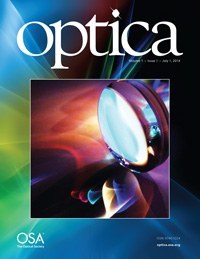
PhD students' research on single molecule light field microscopy published in Optica
Researchers at the University of Cambridge have developed a new way of imaging cells in 3D at 20nm resolution using single molecule light field microscopy (SMLFM), a new class of three-dimensional (3D) light field technology.
A paper showcasing the precision and capabilities of SMLFM is featured in this month’s issue of Optica. The paper is the result of progressive work by researchers at the University of Cambridge, which includes three PhD students from the Centre for Doctoral Training (CDT) in photonics: Ruth Sims (PSD CDT), Sohaib Abdul Rehman and Sarah Benaissa (IPES CDT) and colleagues.
Title: Single molecule light field microscopy.
Authors: Ruth R. Sims, Sohaib Abdul Rehman, Martin O. Lenz, Sarah I. Benaissa, Ezra Bruggeman, Adam Clark, Edward W. Sanders, Aleks Ponjavic, Leila Muresan, Steven F. Lee, and Kevin O’Holleran
Abstract:
We introduce single molecule light field microscopy (SMLFM), a new class of three-dimensional (3D) single molecule localization microscopy. By segmenting the back focal plane of a microscope objective with an array of microlenses to generate multiple 2D perspective views, the same single fluorophore can be imaged from different angles. These views, in combination with a bespoke fitting algorithm, enable the 3D positions of single fluorophores to be determined from parallax. SMLFM achieves up to 20 nm localization precision throughout an extended 6µm depth of field. The capabilities of SMLFM are showcased by imaging membranes of fixed eukaryotic cells and DNA nanostructures below the optical diffraction limit.
Publication: Optica Vol. 7, Issue 9, pp. 1065-1072 (2020).
Read the abstract: link
Read the full text: link
EPSRC funded Centres for Doctoral Training:
EPSRC Centre for Doctoral Training in Integrated Photonic and Electronic Systems (IPES CDT, EP/L015455/1); Securing the Future: Photonic Systems Development (PSD CDT, EP/G037256/1).

